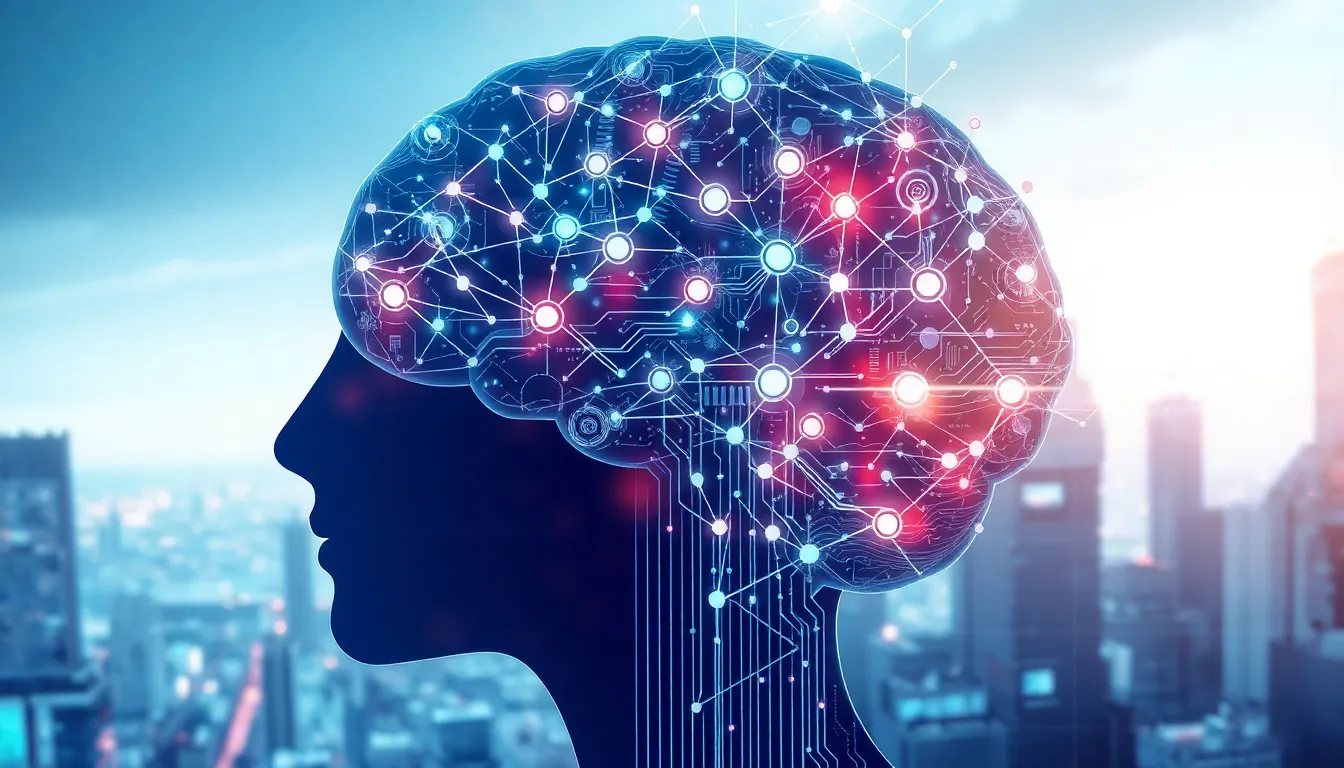Table of Contents
ToggleArtificial intelligence might sound like something straight out of a sci-fi movie, but it’s more real than your morning coffee. From virtual assistants that remind you of your dentist appointment to algorithms that suggest your next binge-worthy series, AI is everywhere. But don’t worry if you’re feeling a bit lost in the tech jargon—this guide is here to demystify it all.
What Is Artificial Intelligence?
Artificial intelligence, commonly known as AI, refers to computer systems designed to perform tasks typically requiring human intelligence. These tasks include problem-solving, learning, and understanding natural language.
Definition and Overview
AI encompasses a range of technologies and methods. Machine learning, a key component of AI, enables systems to improve through experience. Natural language processing allows computers to comprehend and respond to human language. Computer vision facilitates image and video analysis. Experts categorize AI into two main types: narrow AI focuses on specific tasks, while general AI aims for broader cognitive abilities.
Brief History of AI
The roots of AI trace back to the mid-20th century. In 1956, the Dartmouth Conference marked the formal birth of AI as a field of study. Early programs included simple games like chess and basic problem-solving tasks. Progress slowed during the 1970s, an era known as the “AI winter.” Renewed interest in the 21st century emerged with advances in computing power and data availability. Today, AI plays a pivotal role in numerous applications, such as healthcare, finance, and entertainment.
Types of Artificial Intelligence

Artificial intelligence (AI) can be categorized into different types based on its capabilities and functions. Understanding these types helps clarify how AI operates in various applications.
Narrow AI vs. General AI
Narrow AI specializes in specific tasks, such as speech recognition and image classification. It performs these tasks using algorithms tailored for particular functions. Examples include virtual assistants like Siri and recommendation systems used by Netflix. General AI, on the other hand, refers to a system with human-like cognitive abilities, enabling it to learn and adapt across a range of tasks. Developing general AI presents significant challenges, making it an aspirational goal within the AI community.
Reactive Machines vs. Limited Memory
Reactive machines operate solely based on current inputs and do not form memories or use past experiences. Chess-playing programs exemplify this type, analyzing moves without evaluating historical data. Limited memory AI, however, utilizes past experiences to enhance performance. It gathers data and adjusts its actions accordingly. Self-driving cars fall into this category, relying on previous journeys to improve navigation and decision-making processes.
How Artificial Intelligence Works
Artificial intelligence functions through a combination of techniques, primarily machine learning and neural networks. These technologies enable systems to analyze data, learn, and make predictions or decisions.
Machine Learning Basics
Machine learning serves as a core component of AI. It involves algorithms that allow computers to learn from data without explicit programming. Supervised learning, unsupervised learning, and reinforcement learning represent key categories within machine learning. Supervised learning utilizes labeled datasets to guide the training process, while unsupervised learning identifies patterns in unlabeled data. Reinforcement learning enables an AI agent to learn optimal actions by receiving feedback from its environment. These strategies contribute to the development of applications like fraud detection and recommendation systems.
Neural Networks Explained
Neural networks mimic the structure of the human brain. These networks consist of interconnected nodes or “neurons,” arranged in layers. The architecture typically includes an input layer, hidden layers, and an output layer. Each connection between neurons has an associated weight that adjusts during training to minimize errors. Convolutional neural networks excel in processing visual data, while recurrent neural networks are suited for sequential data like speech or text. Such networks power many applications, including image recognition and language translation, showcasing the vast potential of AI technologies.
Applications of Artificial Intelligence
Artificial intelligence permeates various sectors, enhancing efficiency and effectiveness. Its applications span everyday life and the business world.
AI in Everyday Life
AI enhances daily experiences through technologies like virtual assistants and smart home devices. People engage with AI tools such as Siri, Alexa, and Google Assistant frequently, managing tasks and obtaining information seamlessly. Recommendation algorithms also personalize user experiences on platforms like Netflix and Amazon. Image recognition technology helps in organizing photos and enabling security systems. Moreover, AI-driven chatbots provide immediate support on websites, improving customer service interactions.
AI in Business and Industry
In the business sector, AI optimizes operations and drives innovation. Industries utilize AI for data analysis, streamlining decision-making processes. Marketing campaigns leverage AI to target specific audiences based on behavioral insights. Financial institutions employ machine learning models to detect fraudulent transactions and assess risk. Manufacturing benefits from AI systems that predict equipment failures and enhance supply chain management. AI also plays a vital role in research and development, accelerating discoveries in pharmaceuticals and technology.
Challenges and Ethical Considerations
Navigating the challenges of artificial intelligence involves understanding privacy, security, and bias. Addressing these issues is crucial for responsible AI development.
Privacy and Security Concerns
Privacy problems arise when AI systems collect and process vast amounts of personal data. Data breaches can lead to unauthorized access to sensitive information, posing significant risks to individuals. Many individuals express concern over how their data is used and whether it remains secure. Organizations must implement robust security measures to protect user information from potential threats. Regulations, such as the General Data Protection Regulation (GDPR), aim to safeguard personal data and give individuals control over their information. Compliance with these standards is essential for fostering trust in AI technologies.
Bias in AI Systems
Bias remains a significant issue within many AI systems. Algorithms can inadvertently reflect prejudices present in the data they are trained on. These biases lead to unfair treatment of certain groups and impact decision-making in crucial areas such as hiring and law enforcement. Researchers emphasize the need for diverse datasets to mitigate bias and ensure fairness. Regular audits and updates of AI systems help identify and correct biased outcomes. Addressing these issues supports the development of more equitable AI applications that serve all users effectively.
Artificial intelligence is reshaping how people interact with technology daily. Its applications are vast and varied, from enhancing personal convenience to transforming business operations. As AI continues to evolve, understanding its fundamental concepts and implications becomes increasingly important.
While the benefits are significant, challenges such as privacy concerns and algorithmic bias must be addressed. By fostering transparency and ethical practices, society can harness AI’s potential while ensuring it serves everyone fairly. Embracing AI knowledge empowers individuals and organizations to navigate this rapidly changing landscape confidently.




